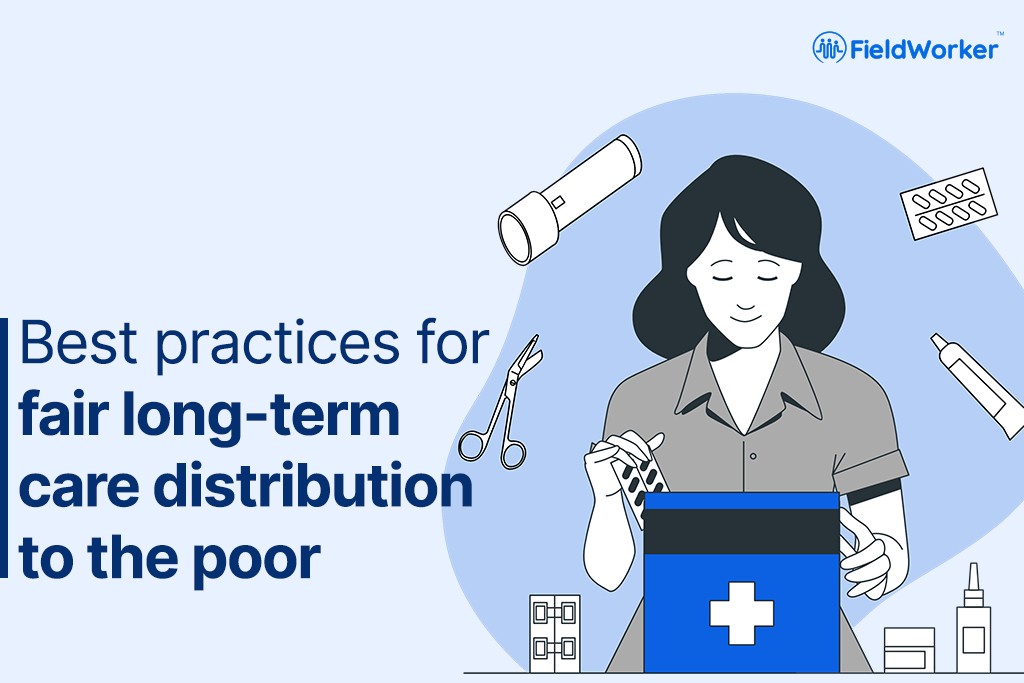When people cannot carry out daily tasks alone, long-term care services help them live as freely and safely as possible. The following three types of long-term care are the most typical:
People frequently require long-term care :
- as they age,
- when they have a severe and enduring health condition, or
- when they are disabled.
Long-term care is costly. According to reports, a private nursing home room will cost $9,034 per month, while a one-bedroom assisted living apartment will cost $4,500. A home health aide’s monthly salary is $5,148. Moreover, half of the elderly patients receiving long-term care do so in nursing homes. The statistics say the average price for a semi-private room in 2016 was $6,844 per month, and the average cost for a private room was $7,698 per month. These amounts total about $82,100 and $92,400, respectively, annually.
A wide range of services is included in long-term care intended to address a person’s health or personal care needs over a short or long period. Public funds cover most long-term care costs, most of which come from Medicaid, a joint federal-state health program for low-income people.
Personal savings and private insurance do not significantly change or enhance the quality of long-term care for millions of elderly and underprivileged people. Some reports claim that the percentage of poor persons 65 and older has reached as high as 23% over the past three years.
How is the need for Medicaid defined currently?
Long-term care (LTC) is the term used to describe a wide range of services offered by paid or unpaid providers. They assist individuals who are limited in their capacity to care for themselves because of a physical, mental, or chronic health condition that is anticipated to last for a considerable amount of time.
Unfortunately, numerous studies reveal that many senior citizens who own substantial amounts of real estate and financial assets receive long-term care from Medicaid for free or at discounted rates. These results shouldn’t surprise because, in many states, the program’s rules and administration are lax and porous.
According to calculations, Medicaid monies are erroneously utilized for free or at subsidized rates yearly to pay for the long-term care of people with sizable asset holdings of over $6 billion. According to a breakdown of this sum, more than $3 billion might be recovered from retirement assets and approximately $3 billion via improved estate recoveries.
The impact of unfair distribution of Medicaid on the overall system
In addition to aging, the population is also living longer and more frequently with in
- Looking at these numbers, The system should take concrete measures to lessen the strain on family carers, the 42 million-strong invisible army of people who provide day-to-day care for their family or friends, frequently at significant personal expense, which often leads to debt. So directing more significant funding toward home-based care and away from facilities under public programs like Medicaid is something to consider.
- Many states don’t consider retirement assets when determining whether a person is poor enough to qualify for Medicaid. And this loophole alone causes the government to lose more than $3 billion annually.
- It is unjust since retirement assets, which have significant tax advantages, are meant for spending on health and long-term care during old age rather than for bequests. However, it represents an extensive resource for Medicaid.
- Additionally, most states make little to no effort to reclaim tangible and financial assets from the estates of deceased Medicaid beneficiaries, despite mandates in federal law.
- Of course, there are many (legitimate and compliant with the law) explanations for why some assets are not recoverable. Still, the superior outcomes of states with recovery rates of 10% suggest that they can do much more.
Therefore, revising the statute to include the following amendments would help:
The Strategy to combat the fair distribution of Medicaid:
1. Based on the best practices and lessons learned from successful states, establish modest but progressively ambitious targets for the states’ estate recovery initiatives. These objectives should be enforced by a penalty that lowers the amount of matching federal money for Medicaid if they are not reached.
2. The majority of states count retirement assets for determining Medicaid eligibility. However, several sizable states do not.
3. Illegal methods of affluent asset transfer. Existing federal, state, and local agencies and organizations should be mandated to focus on this burgeoning wave of potential long-term care recipients to guarantee that current and emerging millions of poor people, particularly the elderly, have equal access to long-term care services and support.
Our rapidly aging society will require extensive long-term care, and the US is not equipped to provide it. We need a comprehensive national strategy to help people age in place, even though some states and localities are creating innovative systems.
The concept needs to incorporate:
- Building more accessible and cheap housing, apartments, and transit networks are just a few examples of new ways of thinking about local communities and their assistance in maximizing independence.
- To support people living independent, secure, and active lives as they age, more integration with health care services and broader use of technology are needed.
- A more efficient, seamless system of financing that enables people and families to pay for the services they require without going into debt.
Conclusion: Let us keep Medicaid fair.
Historically, our financing has gone to organizations like long-term care facilities rather than the people who utilize those facilities. Therefore, giving people more control over those funds can result in better outcomes and reduced costs. People can use these resources to remain in the neighborhood and avoid nursing homes and unnecessary hospitalizations.
The state and federal levels have seen tremendous growth in long-term care regulations and services during the last few decades. Unfortunately, the middle and upper classes have received the most attention from even the most well-meaning institutions and organizations. The state must improve long-term care and support services for the elderly poor, and other impoverished individuals in terms of quality.
Science and technology, with the correct design methods, can pave the way for further investigation of culturally suitable and financially viable long-term care service and support systems. The challenge for those who create long-term care policies is ensuring that all older persons in poverty, regardless of race, sexual orientation, or religion, receive high-quality services and support respectfully and dignifiedly. It is crucial to reconsider how to create laws that specifically target the long-term care of all deserving individuals as more and more disadvantaged people age.
Whether someone is highly impoverished, middle-class, or has the means to purchase long-term care insurance, there is no single system that can accommodate all of their demands. We’ll need to develop various models and approaches and possibly many private-public collaborations and community involvement for a long-term care program to work.

